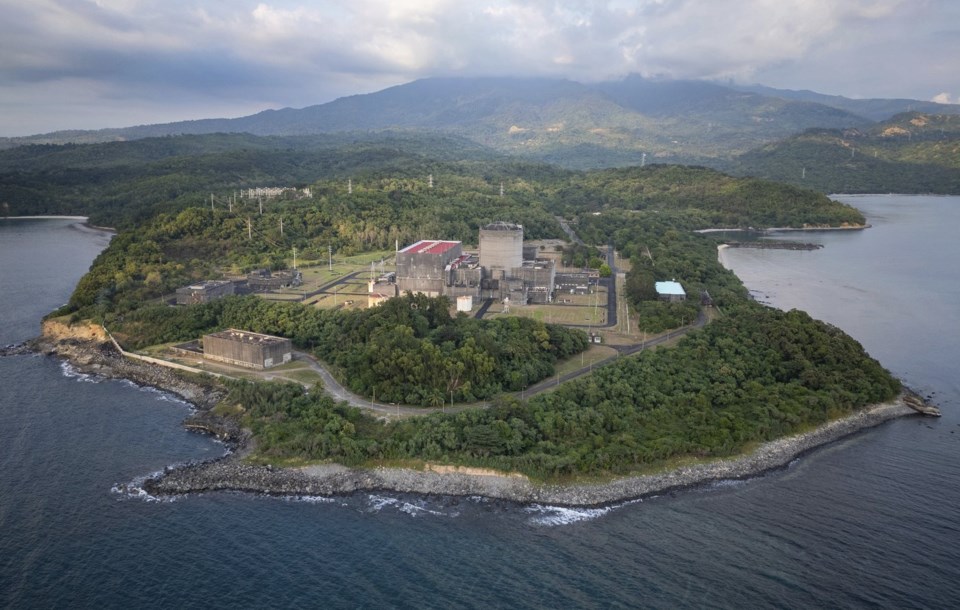JAKARTA, Indonesia (AP) — Southeast Asia's only nuclear power plant, completed four decades ago in Bataan, about 40 miles from the Philippine capital Manila, was built in the 1970s but left idle due to safety concerns and corruption. It has never produced a single watt of energy.
Now the Philippines and other countries in fast-growing Southeast Asia are looking to develop nuclear energy in their quest for cleaner and more reliable energy. Nuclear energy is viewed by its proponents as a climate solution since reactors don’t emit the plant-warming greenhouses gases released by burning coal, gas or oil. Advances in technology have helped reduce the risks from radiation, making nuclear plants safer, cheaper to build and smaller.
“We see multiple signs of a new era in nuclear power across the world,” said Faith Birol, executive director of the International Energy Agency, adding that it expects 2025 to be a historical high for nuclear-generated electricity because of new plants, new national plans and interest in smaller nuclear reactors.
Nuclear energy has been used for decades in wealthier nations like the U.S., France and Japan. It produces about 10% of all electricity generated worldwide, with 413 gigawatts of capacity operating in 32 countries, according to the IEA. That is more than African's entire generating capacity. The IEA says construction of new nuclear power plants needs to “accelerate significantly” in this decade to meet global targets for ending emissions of greenhouse gases.
Southeast Asia will account for a fourth of global energy demand growth between now and 2035, and fossil fuels account for most of the region's energy capacity. Many countries in the region are showing interest in building nuclear power plants — which typically produce one gigawatt of power per plant — to help clear their smoggy skies and boost capacity.
Indonesia plans 20 nuclear power plants. A Korean company is assessing restarting the mothballed Philippine plant. Vietnam has revived nuclear plans, and Malaysia’s future plans include nuclear energy. Singapore signed a nuclear cooperation agreement with the U.S. last year, and Thailand, Laos, Cambodia, and Myanmar have shown interest in nuclear power.
But nuclear power plants are expensive, take years to build and require a long time to become profitable. Vietnam suspended a nuclear project in 2016 after costs soared to $18 billion, but on Jan. 14, it signed a deal with Russia on atomic energy cooperation.
International financing for nuclear energy is becoming more available, said Henry Preston, a United Kingdom-based communications manager for the World Nuclear Association, noting that 14 major financial institutions endorsed a goal for tripling global nuclear energy capacity by 2050 at the latest Climate Week NYC.
Financing sources are still limited, though. The World Bank does not fund any nuclear energy development projects.
“We hear the call from some stakeholders to explore nuclear power to decarbonize energy and improve energy supply reliability," a World Bank spokesperson said in a recent written response to questions from The Associated Press. "We continue to have conversations with our board, management, and external stakeholders to understand the facts. Any reconsideration of our position is ultimately a decision for our member countries."
Developing robust nuclear energy policies and regulations, now lacking in many countries, could catalyze more funding by reassuring investors, Preston said.
Technological advances are making nuclear power more affordable, experts say.
Small modular reactors, which advocates say can generate up to roughly one-third the amount of power of a traditional reactor, can be built faster and at lower costs than large power reactors, scaling to fit the needs of a particular location. Advocates say they are safer due to simpler designs, lower core power, and more coolant, giving operators more time to respond in case of accidents.
Critics question how inexpensive the technology might be since smaller reactors have not been widely commercially deployed, said Putra Adhiguna of the Jakarta-based think tank Energy Shift Institute.
The small modular reactors already operating are run by state-owned entities that aren’t transparent about performance or costs. The cost of the first such reactor that was to be commercially deployed in the U.S. inflated by about half before it was cancelled, he said. The Idaho-based project had a target of delivering 40 years of electricity at $55 per megawatt-hour, but project costs climbed to $89 per MWh, according to a report by The Institute for Energy Economics and Financial Analysis.
Nuclear disasters dimmed earlier enthusiasm for nuclear power in Southeast Asia. Ukraine’s 1986 Chernobyl disaster was a factor behind the decision to shelve the project in the Philippines. Meltdowns in 2011 at the Dai-ichi nuclear power plant in Fukushima, Japan, following a catastrophic earthquake and tsunami also raised worries, leading Thailand to halt its nuclear power plans. In 2018, Malaysia’s then prime minister Mahathir Mohamad cited such disasters when deciding against using nuclear energy.
Some other challenges remain. Markets for nuclear technologies remain concentrated in a few countries — Russia controls roughly 40% of the world's supply of enriched uranium — and this is a ““risk factor for the future,” said an IEA report. It added that safely disposing of spent fuel and other radioactive waste is essential to gain public acceptance of nuclear power.
For countries like Vietnam, a lack of trained engineers and scientists is also a big obstacle. It estimates that it will need around 2,400 trained personnel to revive its nuclear program.
“This is not just about the program but about building a nuclear power ecosystem and technology for the future,” the state-run VN Express cited Minister of Industry and Trade Nguyen Hong Dien as saying.
___
Ghosal reported from Hanoi, Vietnam.
___
The Associated Press’ climate and environmental coverage receives financial support from multiple private foundations. AP is solely responsible for all content. Find AP’s standards for working with philanthropies, a list of supporters and funded coverage areas at AP.org.
Victoria Milko And Aniruddha Ghosal, The Associated Press



